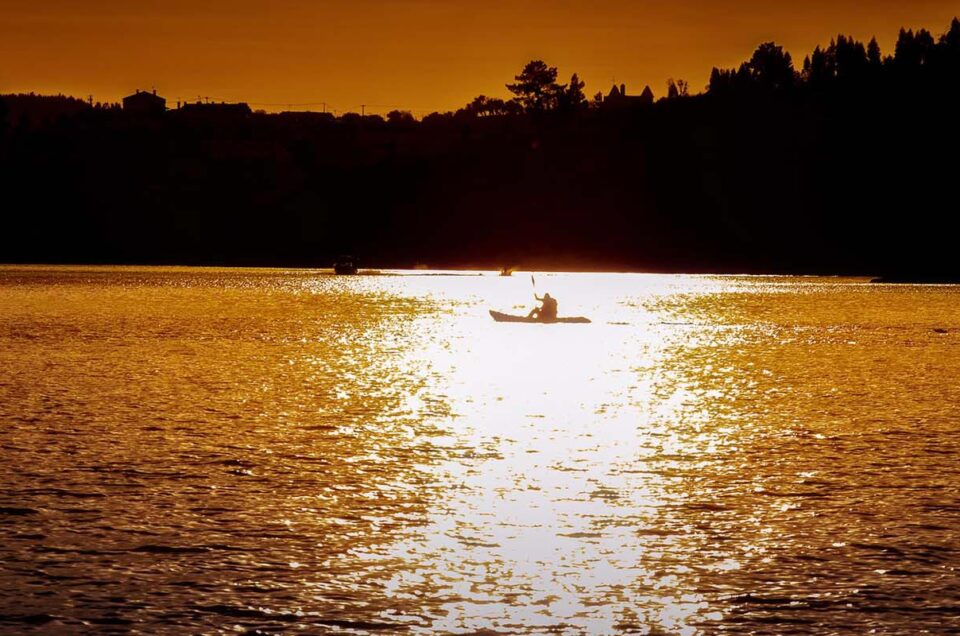Bahir Dar is the third biggest city in Ethiopia and it lies on the southern shore of Lake Tana, the country’s biggest lake. It is the capital of the Amhara region and it has a population of around 250,000.
It is an established tourist destination that is often referred to as the “Ethiopian Riviera”. It is a well-maintained, visitor-friendly location that offers affordable accommodation, fantastic restaurants, and numerous points of interest.
Some of the highlights include the various naturally-beautiful wonders which surround the city. The Blue Nile is one of the main highlights, in particular, its stunning waterfall. The falls are located 28 km southeast of the city and are a must-see for anyone visiting Bahir Dar.
Is Bahir Dar safe? Ethiopia is generally a very safe country to visit. There is always a crime in every city, but in Bahir Dar, it is very low compared to the capital and other cities in neighboring countries. Read more about Ethiopia’s safety and security.
This guide will explain the best experiences Bahir Dar and its surrounding area have to offer visitors. We will also explain the best ways to reach the city.
The Best Things to See and Do Around Bahir Dar
Here are just a handful of the best points of interest Bahir Dar has to offer visitors including the Blue Nile Falls, Lake Tana, and some local cultural activities and places to see.
Lake Tana
The largest lake in Ethiopia is the source of the Blue Nile and it is truly spectacular. The lake is approximately 84 km long and 66 km wide. Its azure waters, lush shoreline, and diverse range of birdlife make the views and scenery unforgettable. In 2015, the UNESCO Biosphere Reserve recognized the lake for its natural importance.

Where is Lake Tana located? The lake is located at an altitude of 1788 meters on the north-central plateau of Amhara. Bahir Dar lies on its southern shore.
How many islands are in Lake Tana? In total there are 37 islands in the vast lake. They can be reached by boat and there are a number of monasteries in and around the lake.
The Blue Nile Falls
Known locally as ‘Tis Islat’ (meaning ‘great smoke)’, the jaw-dropping waterfall is a 400-meter-wide waterfall during the rainy season. Though it gushes water all year round, it does so less furiously outside of the wetter months. The falls have isolated the ecology of Lake Tana from the rest of the Nile, and this has played a pivotal role in the evolution of the area’s wildlife.
Ancient Monasteries
Bahir Dar has 37 monasteries that date back to the 16th and 17th centuries. They are well-structured and the interiors are decorated with religious imagery including pictures of Christian martyrs and Bible stories. There are numerous guided tours that you can book, a guide can take you between the monasteries and provide insightful information.
Bahir Dar Market
The Market is not a very touristic place but what it offers is an insight into genuine Bahir Dar’s day-to-day life. You can find literally anything at the market including clothes, spices, livestock, and a mouthwatering range of food. The best day to experience the hustle and bustle is on a Saturday (market day) when buyers and sellers pour in from neighboring villages.
Che Che Ido
Che Che Ido opens every evening and has a stage for local musicians to play Ethiopian music. There is no entry fee but donations to the players are appreciated and deserved. The bar stocks a wide variety of drinks including Ethiopian beers. The crowd is young, lively, and welcoming. If you want you can get involved in dancing and even get onto the stage!
Getting to Bahir Dar
Bahir Dar is one of Ethiopia’s largest cities and is well-connected. There are a number of transport options available to visitors.
Bahir Dar by Plane
Bahir Dar Ginbot Haya Airport is situated 8 km west of the city center. There are regular flights from the country’s main airport, Addis Ababa, which are run by Ethiopian Airlines. There are also domestic flights to and from various other places including Lalibela, Gondar, and Axum.
Bahir Dar by Car
Tourists are allowed to use an international driving license to drive their own vehicle for 3 months. To drive a local vehicle or to drive for a longer period than 3 months it is necessary to get an Ethiopian driving license.
Bahir Dar is 555 km northeast of Addis Ababa by road (national highway 3). From Gondar, it is 170 km south via road 3. It is just over 310 km east of Lalibela if you go through Woleta.
Bahir Dar By Bus
The city is connected by daily buses (and private minibusses) which run from Addis Ababa, Lalibela, and Gondar. They often do not leave from the bus station but run from hotels and are organized through tourist agencies. Minibusses are more expensive than buses but are much faster.




